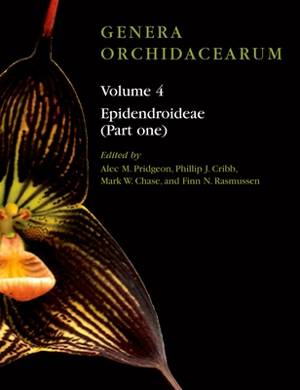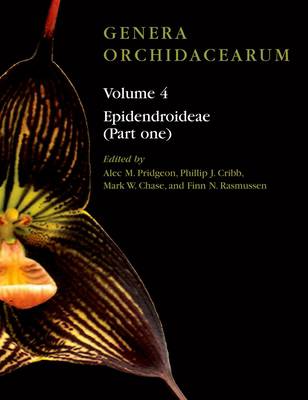
- Retrait gratuit dans votre magasin Club
- 7.000.000 titres dans notre catalogue
- Payer en toute sécurité
- Toujours un magasin près de chez vous
- Retrait gratuit dans votre magasin Club
- 7.000.0000 titres dans notre catalogue
- Payer en toute sécurité
- Toujours un magasin près de chez vous
Genera Orchidacearum
Volume 4: Epidendroideae (Part 1)
276,95 €
+ 553 points
Description
For centuries orchids have been among the most popular of plant families, with thousands of species and hybrids cultivated worldwide for the diversity, beauty, and intricacy of their flowers. The Genera Orchidacearum series represents a robust and natural classification of the orchids, something that has eluded plant scientists and orchid enthusiasts for years. The editors, who are all distinguished orchid specialists, incorporate a wealth of new DNA data into a truly phylogenetic classification, identifying the areas and taxa that merit additional work. To this end, they have invited several international specialists to contribute in their particular areas of expertise. Each volume provides comprehensive coverage of one or two orchid subfamilies and the series as a whole will be an indispensable reference tool for scientists, orchid breeders and growers. Orchidaceae is the largest monocotyledon family and perhaps the largest plant family in terms of number of species, approximately 25,000. However, for a variety of reasons it remains one of the least understood. The fossil record is poor, and active research has been relatively scarce until recent years, in part because of the sheer size and cosmopolitan distribution of the family. This fourth volume treats the first 210 genera of the largest subfamily, Epidendroideae, including some of the showiest orchids often used in hybridizing. Comprehensive treatments are provided for each genus, which include complete nomenclature, description, distribution (with map), anatomy, palynology, cytogenetics, phytochemistry, phylogenetics, pollination, ecology, and economic uses. Cultivation notes are included for those genera known to be in hobbyist collections. Genera are beautifully illustrated with line drawings and color photographs.
Spécifications
Parties prenantes
- Editeur:
Contenu
- Nombre de pages :
- 696
- Langue:
- Anglais
- Collection :
- Tome:
- n° 4
Caractéristiques
- EAN:
- 9780198507123
- Date de parution :
- 22-06-06
- Format:
- Livre relié
- Format numérique:
- Genaaid
- Dimensions :
- 279 mm x 218 mm
- Poids :
- 2698 g

Les avis
Nous publions uniquement les avis qui respectent les conditions requises. Consultez nos conditions pour les avis.





